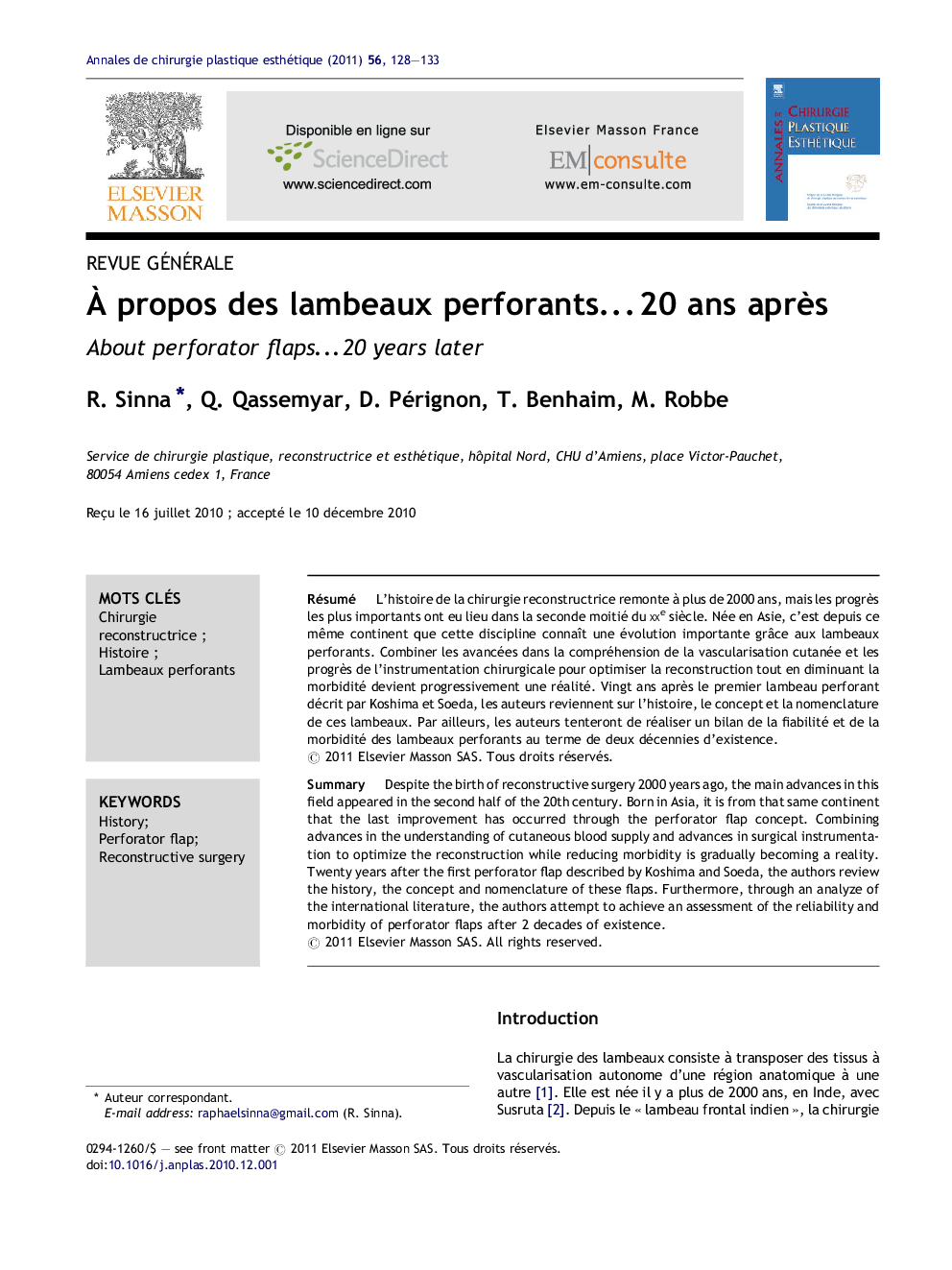| Article ID | Journal | Published Year | Pages | File Type |
|---|---|---|---|---|
| 3184902 | Annales de Chirurgie Plastique Esthétique | 2011 | 6 Pages |
RésuméL’histoire de la chirurgie reconstructrice remonte à plus de 2000 ans, mais les progrès les plus importants ont eu lieu dans la seconde moitié du xxe siècle. Née en Asie, c’est depuis ce même continent que cette discipline connaît une évolution importante grâce aux lambeaux perforants. Combiner les avancées dans la compréhension de la vascularisation cutanée et les progrès de l’instrumentation chirurgicale pour optimiser la reconstruction tout en diminuant la morbidité devient progressivement une réalité. Vingt ans après le premier lambeau perforant décrit par Koshima et Soeda, les auteurs reviennent sur l’histoire, le concept et la nomenclature de ces lambeaux. Par ailleurs, les auteurs tenteront de réaliser un bilan de la fiabilité et de la morbidité des lambeaux perforants au terme de deux décennies d’existence.
SummaryDespite the birth of reconstructive surgery 2000 years ago, the main advances in this field appeared in the second half of the 20th century. Born in Asia, it is from that same continent that the last improvement has occurred through the perforator flap concept. Combining advances in the understanding of cutaneous blood supply and advances in surgical instrumentation to optimize the reconstruction while reducing morbidity is gradually becoming a reality. Twenty years after the first perforator flap described by Koshima and Soeda, the authors review the history, the concept and nomenclature of these flaps. Furthermore, through an analyze of the international literature, the authors attempt to achieve an assessment of the reliability and morbidity of perforator flaps after 2 decades of existence.
